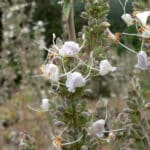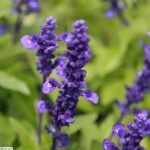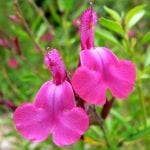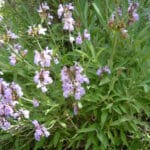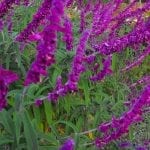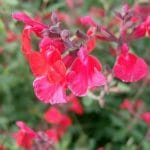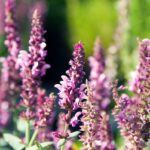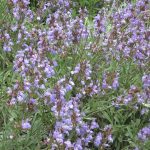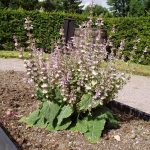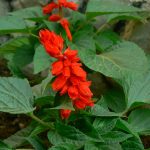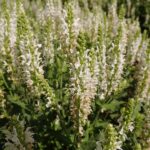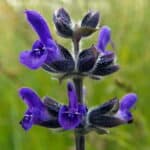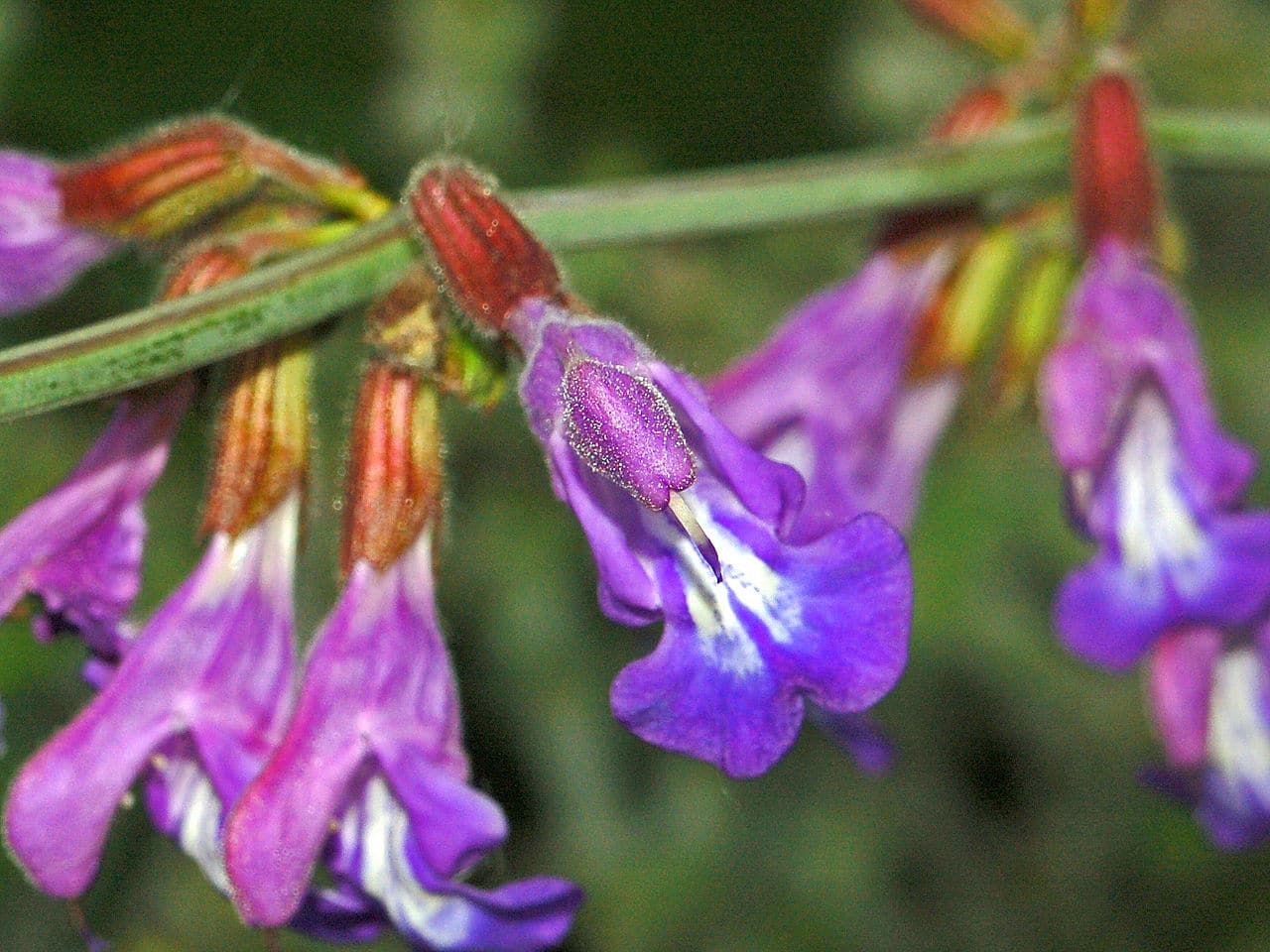
Image - Wikimedia / Hectonichus
Sage is a very grateful plant: whether we have it in a pot or if we choose to plant it in the garden, it will flourish without difficulty for years. It is also quite easy to care for, as it needs very little to be perfect. However, Has it happened to you that you have bought one but have only seen it produce its flowers once?
This, although at first it may be somewhat curious, it can happen. In fact, it is a fairly common problem that cultivated plants tend to have, and not just sage. So here I will explain to you first how are the sage flowers, and then, I will give you some very practical advice so that you can get your specimen to bloom again.
What are the characteristics of sage flowers?
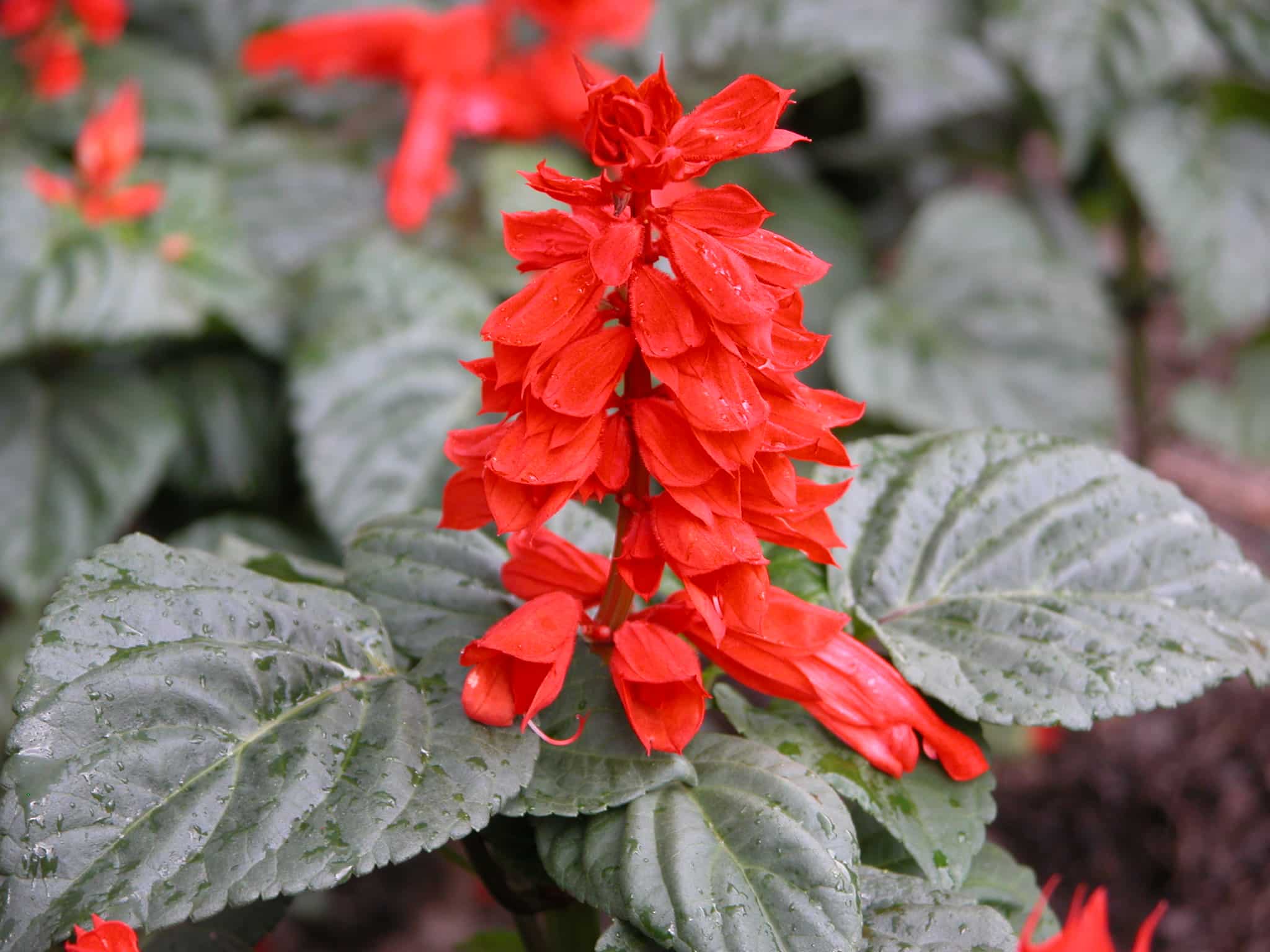
Image - Flickr / Carl Lewis
Before starting it is important that you know that The Salvia genus is made up of about 800 species, the majority of which are American (about 500 in total), but there are also quite a few European and Asian species.. In addition to that, herbs are distinguished (and of them, there are those that only live one year, those that live two years, and others that are perennial), and subshrubs or bushes, which are those that, apart from living several years, develop stems woody or semi-woody.
If we talk only about the flowers, all types of salvia produce them in groups called inflorescences.. These inflorescences can be racemes or panicles. The size of these is quite large: they usually measure approximately 20 centimeters. Also to say that they are composed of flowers of about 1-2 centimeters, with a tubular or bell-shaped shape. The corolla is claw-shaped and has two "lips": the upper one, which is usually entire, and the lower one, which is divided into two lobes.
As a curiosity, also say that they are hermaphrodites. This means that they have male and female parts on the same flower. Such a flower is usually, by the way, red, lilac or lilac-bluish in color.
When does sage bloom?
Depending on the species and the climate, sage can bloom in virtually any season of the year. In general, it does so between spring and summer, but if, for example, the winter is warm, then it could flower then. It all depends on how the plant is. Even so, here I tell you a small list with the most popular species and when they bloom:
- Image - Wikimedia / Stan Shebs
- Image - Wikimedia / Stan Shebs
- Salvia apiana: spring.
- Salvia farinacea: spring Summer. See file.
- Salvia greggii: from spring to fall. See file.
- Image - Wikimedia / Cillas
- Image – Flickr/Ernest James
- Image - Wikimedia / KENPEI
- Salvia lavandulifolia: spring Summer. See file.
- Salvia leucantha: it blooms once in autumn-winter, and then it can do it again in spring.
- Salvia microphylla: late summer-autumn.
- Image - Wikimedia / David J. Stang
- Image - Wikimedia / A. Bar
- Image - Wikimedia / Udo Schröter
- Image - Wikimedia / Dinesh Valke
- Image - Wikimedia / Salicyna
- Image - Flickr / Peter O'Connor aka anemoneprojectors
- Salvia splendens: spring fall. See file.
- superba sap: spring Summer.
- sage verbenaca: spring Summer. See file.
Why isn't my sage blooming?
Now let's talk about why salvia only bloomed once (or not at all) and what needs to be done to make it bloom. and for it it is important to start with the basics: this plant needs a lot of light (in fact, it is preferable that it is exposed to direct sunlight) so that it produces its flowers. This is why it should not be grown in the shade, or in places with little light, nor should it be placed near larger plants that can provide shade.
Another important issue is check if you have your basic needs covers; that is to say: is it well watered? Is it paid regularly? Do you have any pests? The sage flowers will not be able to sprout if the plant has a problem. To know if everything is fine, I recommend that you do the following:
- Inspect the leaves for insects. This plant can have various pests throughout its life, such as spider mites, thrips, leafminers, or whiteflies. If you have a magnifying glass, I advise you to use it to look for them, as it will be very, very useful for these insects can go unnoticed. In case you have, do not hesitate to apply a treatment with an ecological insecticide, such as diatomaceous earth (you can buy it here) of which I leave you a video below.
- Check the humidity of the soil. Sage is not a plant that can go without water for a long time, since it does not have fleshy leaves like the crass ones, nor tuberous roots. But excess water will also hurt you; that is to say, if we decide to acquire a sage, we have to find the halfway point and water it when needed. For this, a simple wooden or plastic stick will serve you. If you put it into the ground to the bottom, then when you take it out you will see if it is dry or if it is wet. Based on this, you will know whether to water or not.
- Fertilize your sage during the growing months so it can grow and flourish. Use ecological fertilizers so as not to harm the environment (there are many beneficial insects, such as bees or butterflies, that visit its flowers to feed), following the instructions for use on the packaging.
- If it is in a pot, check to see if the roots are coming out of the holes in it.. It is important that it is planted in a larger one each time this happens (in spring), as lack of space can delay or even suspend flowering. Put it in one that has holes in its base, with a universal growing medium (for sale here).
I hope you serve.
